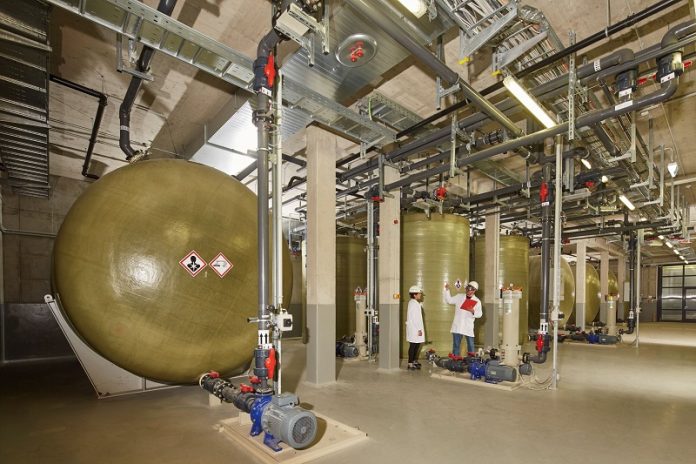
A major step forward in clean energy has just been achieved in Germany.
At the Fraunhofer Institute for Chemical Technology, Europe’s largest vanadium redox flow battery has successfully shown that renewable energy—like wind and solar—can be stored and released in a predictable and reliable way, no matter what the weather is doing.
This is a big deal for the future of green power. One of the biggest challenges with renewable energy is that it’s not always available when we need it.
The sun doesn’t always shine, and the wind doesn’t always blow—yet the demand for electricity doesn’t stop.
Sometimes, when there’s too much green energy being produced, it can’t all be used, and some of it even goes to waste.
In fact, on particularly sunny or windy days, electricity prices can turn negative because there’s more power than the system can handle.
That’s where this new battery system comes in. In a recent test, scientists proved that the battery can store excess renewable power and then release it back into the grid exactly when it’s needed. This ability to smooth out supply and demand could make renewable energy far more dependable.
Dr. Jens Noack, who leads the Flow Battery team at Fraunhofer ICT, says this is a crucial step toward building an electricity system that’s flexible, stable, and fully powered by renewables. With this technology, we’re not just generating green energy—we’re learning how to manage it smartly.
The battery itself uses vanadium redox flow technology, which is different from the lithium-ion batteries found in phones and electric cars. Flow batteries are ideal for large-scale storage because they can store energy for longer periods and are safer and more durable. They also don’t degrade as quickly over time.
What’s more, the entire battery system was developed using German-made parts and expertise. It serves as a testbed for researchers and companies from around the world to explore and improve energy storage technologies.
This project proves that we can store clean energy efficiently and deliver it when needed, rain or shine. That’s a huge leap toward a greener, more reliable energy future—and a big win for the energy transition.



